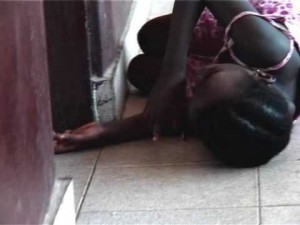
Six years after the catastrophe of war, the Austrian filmmaker, with an appetite for other’s catastrophes, comes to Sierra Leone to create her beautiful, soft focused, precisely framed Austrian pictures. She turns these beautiful and faraway testimonies into something Austrians, they show her the hand that isn’t there, the chest that bears the marks, the missing fingers, the aimless poverty. The eyes that can’t forget, that can’t stop seeing. This is the Africa I was waiting for, and she never fails to deliver it to me, dangerous and terrifying and beautiful.
The machete soldiers, the ones that want to chop their captors limb by limb. Burn them alive. In order to feel these feelings great European orchestral swells by Gorezcki and other miserablists are summoned. I cry, I want to reach into the screen and touch their beautiful scarred faces. These handless faces. They are telling stories which are unendurable, which can’t be thought of, and which no picture could show. Not the deliberate cutting off of the hands of everyone in the village, the left hands of women, even the daughters, and the right hand of men and boys. It makes me feel the weight of these words on my tongue: human and inhuman. This is also human. But please let me not live to see it, or at least not to survive it. And yet here they are, So beautifully framed, so willing in their testimonies. The underground dwellers, the street walker whose father is long gone, left to support mother and child. The school children dancing and chanting their prayers for the future which they know already, it’s written on their faces, doesn’t belong to them.
The filmmaker says: “This is what I saw: the people.”

